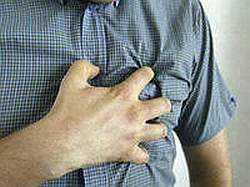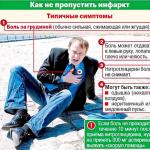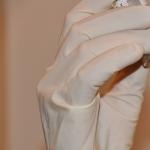WHO usually classifies pre-infarction as unstable angina, which has several forms:
- 1. Angina pectoris, first registered in a person within the last month.
- 2. Progressive angina pectoris (a person already has, but recently her attacks have become more frequent and worse).
- 3. Early postinfarction angina pectoris: the onset of pain within a month after myocardial infarction.
- 4. Angina pectoris after heart surgery (coronary bypass grafting).
- 5. Prinzmetal's angina: pain occurs in the early morning hours.
In any case, the pre-infarction state develops with neglected and untreated angina pectoris, it is also called acute coronary syndrome. But still, this is not the heart attack itself, with the right measures, the attack can stop and not go into MI.
Inherent symptoms
Signs of a pre-infarction state are varied, but the main symptom is pain. It can be localized behind the sternum, in the epigastric region (abdominal syndrome), in the right iliac region, and even in the lower jaw. The pain radiates (gives) to the left shoulder, arm, shoulder blade, under the tongue. The patient becomes excited, he rushes about, there is a fear of death, so strong that the person is afraid to even get up. The pain may not be in the classical sense, but in the form of a burning sensation behind the sternum, severe pressure, heaviness in the region of the heart. It increases with exercise, decreases at rest and when taking cardio drugs.
The pain attack lasts an average of 1 to 20 minutes, with progression, the attacks will become more frequent and stronger. Another symptom is a rapid heartbeat (tachycardia), a feeling of lack of air, suffocation, causeless shortness of breath with a respiratory rate of more than 20 per minute, numbness of the fingers of the left hand, the patient is in a forced position - sitting, resting on his hands, holding on to some objects. There is a cold sweat, blanching of the face, pressure may increase. Signs of preinfarction in men fit into the description of the above picture.
Elderly patients may not have pain, then they talk about an atypical course of the process. In this case, symptoms can manifest as drowsiness, especially daytime, weakness, dizziness, shortness of breath, irritability, cyanosis of the lips, nose, nails, heartburn, even nausea and vomiting. The duration of the pre-infarction state of the outcome of the disease does not determine, everything depends on the correct diagnosis and assistance. Patients may experience pain in the upper back, and if the doctor regards this as cervical osteochondrosis and prescribes physiotherapy, time may be lost. If even a few of these symptoms are present, the patient must be hospitalized.
Signs of preinfarction in women may differ in the lack of symptoms, because. women have a higher pain threshold. Their pain may be in the form of tingling or discomfort in the epigastrium, abdomen, dizziness, difficulty breathing may occur, a woman is able to take this for fatigue and not take action. Or vice versa, women may have severe pain, frequent attacks up to 20-30 times a day, especially at night or in the early morning hours, they last about 30 minutes and are not relieved by taking nitroglycerin. Non-stopping seizures indicate a developing threat of MI. The pre-infarction state eventually leads to necrosis (necrosis) of some part of the heart muscle.
Diagnostic measures
If you suspect a heart attack or a pre-infarction condition, you should not hesitate, you need to call an ambulance, better a specialized team, which should first do an ECG. What to do before the ambulance arrives will be discussed below. Of course, almost any doctor knows how to determine a pre-infarction condition, the clinic plays an important role in making a diagnosis, but changes in ECG waves are decisive.
in patients who have had an angina attack for the first time, the electrocardiogram will show changes in the form of segment displacement, T wave changes, conduction and heart rhythm disturbances. The cardiogram is especially important in the case of an atypical form of a pre-infarction state, extrasystoles, paroxysmal tachycardia and circulatory failure will be recorded on it.
If the attack has receded, it cannot be considered that the person has recovered, an examination by a cardiologist is mandatory for everyone without exception. In addition to the ECG, the doctor will prescribe coronary angiography (the introduction of a contrast agent into the vessels will show the vasoconstriction and their localization on the X-ray, tell you how dangerous the situation is, i.e. help determine the plan for further treatment), ultrasound of the heart, Doppler study and MRI. As laboratory tests, it is necessary to donate blood for the content of 3 indicators in it: troponin (normally does not exist in the blood), creatine phosphokinase (increase in indicators above 5.8 ng / l) and CRP. On an echocardiogram, you can determine the presence of scars from past heart attacks, heart defects, symptoms of poor circulation, aneurysm (expansion) of the heart.

An ECG will show ischemic areas, arrhythmias, infarct scars. MRI evaluates the blood supply to the myocardium, determines the presence of ischemia and predicts its development. Recently, Holter monitoring has been used, i.e. monitor the work of the heart with attached sensors for 24 hours. Then the results are processed, they can reveal hidden rhythm disturbances, control pressure and determine myocardial ischemia. The method is applicable after the removal of the attack. All of these studies are prescribed to confirm or exclude the suspicion of myocardial ischemia, i.e. to an advanced cardiac event. What to do during an attack?
Help and treatment of the disease
First of all, the called ambulance should urgently hospitalize patients who have a history of unstable angina. To relieve pain before the arrival of the ambulance, you need to take an Aspirin tablet (chew) to thin the blood and to avoid the appearance of blood clots. You also need to take a Nitroglycerin tablet under the tongue with an interval of 5-10 minutes until the spasm is relieved. Nitroglycerin should not be taken more than 3 tablets, because. it will cause the pressure to drop. Dizziness or headache when taking nitroglycerin will go away on its own, this is a temporary phenomenon.
You can put a tablet of Validol under the tongue or drop it on sugar, you can also give drops of Corvalol or Valocordin, if they are in the patient's first aid kit. All these drugs dilate the coronary vessels and relieve pain. The patient needs to be provided with access to fresh air, but not cold, the person should lie down to reduce the load on the heart.
temporary cardiologists argue that if there are the first signs of a pre-infarction, death procrastination is like. A person has the so-called first golden hour, during which he must get to the doctors, in this case, surgeons will be able to expand the narrowed vessel surgically by inserting a frame into it, and restore blood circulation in the heart muscle, avoiding an impending heart attack.
Treatment for a pre-infarction state differs little from the prevention of a heart attack itself, because. aimed at relieving an attack of angina pectoris.
Intramuscularly, you can enter the patient Papaverine, No-shpu, Platifillin, which also have a vasodilating effect and will help in reducing pain. If the patient is hypertensive and pain in the heart is combined with an increase in pressure, intravenous administration of Eufillin diluted with saline is necessary.
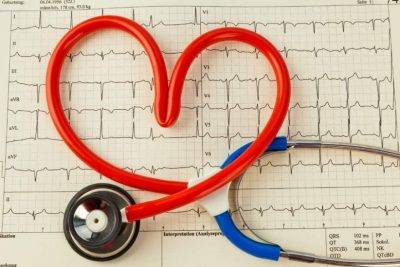
After intensive care in a hospital after a receding attack, treatment must be continued, it must be long enough. Among the prescribed drugs should be called:
- 1. Antiplatelet agents for blood thinning and prevention of agglutination of blood clots: Heparin, Cardiomagnyl, Thrombo ACC.
- 2. Beta-blockers improve myocardial conduction.
- 3. Statins lower cholesterol, the main culprit in blood clots.
- 4. Calcium antagonists (reduce the content of calcium ions in the blood, the consequence of this is the expansion of the vessels of the heart, the removal of spasm): Corinfar, Nifedipine, Isoptin, etc.
- 5. Nitrates (reduce myocardial oxygen demand and facilitate its work): Sustak, Nitrong, Trinitrolong, etc.
Regularly in the course of treatment, an ECG is performed to monitor the condition of the heart muscle and select treatment and behavior tactics, moderate physical activity, sanatorium treatment, and rehabilitation measures are prescribed.
In severe cases, in the absence of the effect of therapeutic prescriptions, the patient may undergo surgical treatment (in a planned manner to improve the condition). It can be coronary artery bypass grafting, aortic balloon counterpulsation. The effect of the operation may be longer if the patient reconsiders his lifestyle in general, follows a diet with salt restriction, high content of fiber, fruits, vegetables, fish instead of meat, with the exception of animal fats. Moderate physical activity is good for the heart: therapeutic walking, cycling.
Necessary Prevention
Speaking about prevention, one should keep in mind quitting smoking, drinking alcohol, normalizing weight, proper rest, avoiding stress, controlling blood pressure, regular intake of prescribed heart drugs. Such patients should always have a first aid kit with medicines for emergency care. It must be remembered that the pre-infarction state is the very first step towards a heart attack, and it is in your power to avoid it. When they talk about the sudden death of someone from a heart attack in full health, doctors believe that the person simply did not pay due attention to the harbingers of danger.
vashflebolog.ru
Causes of myocardial infarction
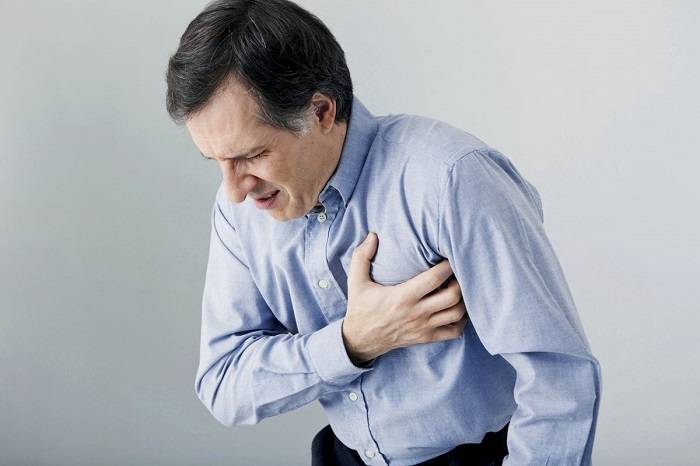
In order not to complicate your own health in the future and not develop chronic heart disease, it is necessary to contact a cardiologist when the main symptoms of the disease appear. If a person is at risk, then he needs an annual medical examination.
- patients with atherosclerosis and diabetes mellitus of any form;
- having close relatives endowed with pathologies of the heart and blood vessels;
- suffering from hypertension of the 3rd degree.
 If, at the first manifestation of a heart attack, the patient is not provided with urgent medical care, then this condition is likely to lead to the development of stroke and coronary artery disease, which are considered dangerous to health. The “rejuvenation” of this disease is negatively affected by inattention to one’s own health, frequent smoking and alcohol abuse, as well as smoked, fatty and spicy foods included in the diet.
If, at the first manifestation of a heart attack, the patient is not provided with urgent medical care, then this condition is likely to lead to the development of stroke and coronary artery disease, which are considered dangerous to health. The “rejuvenation” of this disease is negatively affected by inattention to one’s own health, frequent smoking and alcohol abuse, as well as smoked, fatty and spicy foods included in the diet.
As mentioned above, one of the causes of heart problems is neglect of one's health. If you do not take measures to treat certain diseases at an early stage, they can become chronic and provoke the development of a heart attack.
These diseases include:
- improper or disturbed metabolism, leading to obesity;
- atherosclerosis;
- dysfunction of coagulation;
- diabetes;
- high cholesterol;
- lack of exercise.
The more of the above reasons a patient has, the higher his risk of myocardial infarction.
What are the signs of an incipient heart attack?
If you pay attention to the state of your health, you can timely notice the first and main symptoms of a preinfarction in yourself and prevent its development.
The fact that myocardial infarction begins in men is evidenced by these signs:
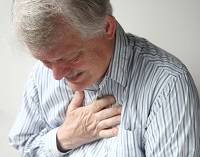
- The appearance of pain in the chest, shoulder blade or upper arms, which occurs especially often when a person is active (usually such pain is aching or pressing).
- Dyspnea.
- Lack of oxygen, in which the patient begins to suffocate.
These first signs of a heart attack in men, when the first stage of the development of vascular and heart diseases appear, usually appear, and after a while they disappear.
The main causes of myocardial infarction are associated with the development of atherosclerosis, in which there is a narrowing of the coronary arteries that supply the heart with blood. This disease can often begin as early as adolescence, develop over many years, and only then manifest itself in the form of a health disorder.
Symptoms of atherosclerosis include:
- dyspnea;
- paroxysmal chest pain;
- memory loss;
- leg pain that occurs while walking;
- dizziness;
- decrease in potency in men under 55 years of age.
Atherosclerosis affects not only the blood vessels that feed the heart, but also the arteries in the legs, as well as the carotid artery that feeds the brain. It is worth knowing that atherosclerosis is not a natural age-related problem, but a disease that can and even needs to be treated.
With the development of a heart attack, the main symptoms of myocardial infarction join the first signs of a pre-infarction state:

- lethargy, which resembles the state of health during the development of the flu;
- increased blood pressure;
- arrhythmia, which occurs without the presence of stress on the body;
- excessive sweating;
- the appearance of toothache;
- numbness of the sternum, as well as the trunk on the left side;
- nausea and vomiting.
This painful condition lasts for several minutes, hours or days, so in any case you need to pay close attention to it, especially if the pains last a long time and are endowed with different intensities.
A heart attack that a man suffered on his legs and assistance
If the disease was transferred on the legs and the signs of myocardial infarction in men were implicit, the patient must be sent to a hospital, where he will undergo a thorough examination of the body.
This is especially important to do if these symptoms appear:
- a sharp decrease in blood pressure;
- pulmonary edema;
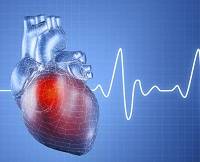
- violation of the heart rhythm;
- pallor of the skin.
With the development of a heart attack and the occurrence of its symptoms, the patient must be given first aid, which consists in the following actions:
- It is necessary to free the man's chest, for which it is necessary to unbutton his shirt or take off his sweater.
- It is required to put the patient under the tongue 1 tablet of nitroglycerin.
- It is necessary to lay the man on a hard surface, after which it is imperative to provide him with peace, which must be carried out until the doctors arrive.
- Provide a normal flow of fresh air, for which you need to open all windows.
After carrying out these actions, it is necessary to call a doctor. If a man has high blood pressure, he can be given half a tablet of analgin. After 5 minutes, if the doctors have not yet arrived, you can give another capsule of nitroglycerin, but first you need to make sure that the pressure has returned to normal and now it is not low. Doctors who arrived on call should be given all known information about the patient's condition and talk about the measures taken.
The consequences of a heart attack include:
- swelling of the lung cavity;
- development of heart failure;
- rupture of muscle tissue in the heart.
The consequences of a male heart attack largely depend on the future lifestyle. If the patient does not get rid of his bad habits, after a certain time he may develop a new heart attack, which can lead to quick death.
Heart attack prevention
In order to prevent a man from having a heart attack, you need to take timely measures that will prevent its occurrence.
You can do this in the following way:
- proper nutrition;
- lifestyle changes, which include the obligatory rejection of unhealthy habits;
- balanced physical activity, which includes both work and good rest;
- calmness of the central nervous system, which can be achieved by avoiding the occurrence of stressful situations and a depressive state;
- sports, which should take into account all the recommendations of the doctor;
- a visit by a man to sanatoriums.
Properly formulated diet helps to speed up the recovery of the patient.

It consists in the following rules for choosing food:
- refusal to use animal fats - only vegetable fats are allowed to the patient;
- it is allowed to eat fresh cottage cheese, while the daily dose should not exceed 200 g;
- it is necessary to take with caution foods that contain a lot of cholesterol;
- the use of poultry and seafood, which must be boiled or steamed (these ingredients must be low-fat);
- you need to strictly limit the amount of salt - about 5 g per day;
The consequences of the development of a heart attack in men
It is customary to distinguish between two types of consequences in a heart attack, namely, remote and acute.
Acute consequences include:
- Heart failure - since this disease affects the left side of the heart muscle, a scar forms on it. As a result, the heart contracts poorly, which leads to a decrease in blood output, which means to its stagnation in the muscle and deterioration of blood flow to the internal organs.
- Arrhythmia - appears in the left ventricle of the heart, which leads to ventricular fibrillation.
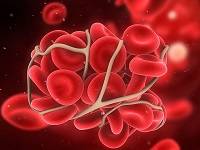
- Thrombosis - with the flow of blood, blood clots are able to move throughout the body of a man, reaching the brain - this is considered the main cause of coronary disease.
- Rupture of the heart - develops with increased blood flow pressure on the muscles of the heart, where there is a scar.
The long-term consequences of the disease are not so severe.
These include:
- pericarditis is an inflammation of the serous membrane of the heart;
- arrhythmia - rhythm disturbance;
- cardiosclerosis - develops with a deterioration in blood circulation.
All these and other consequences that a heart attack gives in men can contribute to the further appearance of blood clots, deterioration of the functioning of blood vessels and the heart, and also increase the risk of rupture of the heart muscle.
Treatment of a heart attack with drugs
The treatment of this disease consists in diagnosing and then taking prescribed medications.
Their main purpose:
- removal of pain;
- search for the affected focus;
- elimination of the disease;
- relief and normalization of the patient's condition.
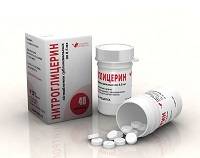 To improve cardiac circulation, remove pain in the chest, expand blood vessels and reduce the load on the heart, the attending physician prescribes nitrates - Nitroglycerin, Mononitrate and Isosorbite.
To improve cardiac circulation, remove pain in the chest, expand blood vessels and reduce the load on the heart, the attending physician prescribes nitrates - Nitroglycerin, Mononitrate and Isosorbite.
You can eliminate pain and discomfort with the help of painkillers. To get a quick effect, narcotic analgesics are used.
Thrombolytics will help break up the formed blood clots and improve blood flow to the heart.
To give the blood a liquid state, as well as the rapid destruction and removal of blood clots, antithrombotic drugs and anticoagulants are used. These drugs include Heparin, Aspirin, Warfarin and so on.
Beta-blockers, namely Inderal and Toprol, can reduce the load on the heart and the work of other organs. These drugs are used in a minimal amount, increasing the dosage of the drug over time.
ACE inhibitors help relax the walls of blood vessels, as well as activate the process of ejection of blood by the heart muscle. These funds include Altas, Privinil, Kapoten.
Calcium antagonists help to restore the rhythm of the heart, relax the vascular muscles and walls - these include Norvasc or Kalan. To lower the content of harmful cholesterol in the blood stream, niacins and fibrates are prescribed.
Treatment of the disease using folk recipes
Effective measures to prevent a heart attack are folk or "grandmother's" methods, which include herbal medicine, restoration of the body with the help of cereals and treatment using products.
 Phytotherapy is the use of medicinal preparations created thanks to medicinal herbs that have a therapeutic effect on the functioning of the heart muscle. They help eliminate spasms that develop in the vessels, reduce the amount of cholesterol that is dangerous to health, normalize blood pressure and remove excess and unnecessary fluid from the body.
Phytotherapy is the use of medicinal preparations created thanks to medicinal herbs that have a therapeutic effect on the functioning of the heart muscle. They help eliminate spasms that develop in the vessels, reduce the amount of cholesterol that is dangerous to health, normalize blood pressure and remove excess and unnecessary fluid from the body.
Such medicinal plants include valerian, hawthorn, wild rose, corn stigmas, calendula and motherwort:
- To prepare an infusion of hawthorn, you need to take a pinch of ripe fruits, then pour them with 250 ml of hot water. Then it is necessary to let the mixture brew for 30 minutes, then use one glass 2 times a day.
- To prepare a tincture of strawberries and rose hips, take 50 g of the fruits of these plants (you can also take leaves). Raw materials should be poured with 0.5 liters of water and steamed for 15 minutes. Then you need to filter the infusion and add boiled water to the original volume. Drink 2 times a day for half a glass before meals.
When carrying out therapy with cereals, patients eat germinated barley grains, rye and wheat. First, the grains must be disinfected with 255 manganese, and then doused with boiling water. The grain to be germinated must be put in a bowl and pour half a liter of water. When they absorb all the liquid, the grains need to be spread out on a wet cloth and covered with gauze soaked in water on top. After 2 days, the sprouts will grow by a centimeter and will be ready to receive.
Strengthen blood vessels and the heart can be certain types of products. For example, nuts, vegetable oils or honey can quickly strengthen and expand the walls of blood vessels, as well as normalize the blood supply to the heart muscle. To make this healthy and tasty medicine, you need to combine 2 tablespoons of honey and a pinch of nuts. The resulting mixture should be eaten in a day.
www.boleznikrovi.com
Only in individual, isolated cases, MI can occur against the background of imaginary health. The sudden development of MI may be the result of blood clots entering the coronary vessels, very strong stresses, or it may be the result of a sharp vasospasm against the background of a sharp release of a large amount of adrenaline. Such events are rare in clinical practice. Basically, the development of MI has a certain ground - IHD, when the patient has arterial hypertension, atherosclerotic processes, as a result of which the vessels narrow.
With an established diagnosis of coronary artery disease, even in the early stages, when there are still no clinical symptoms and signs, a heart attack can occur against a background of a jump in blood pressure, severe stress or excessive physical exertion.
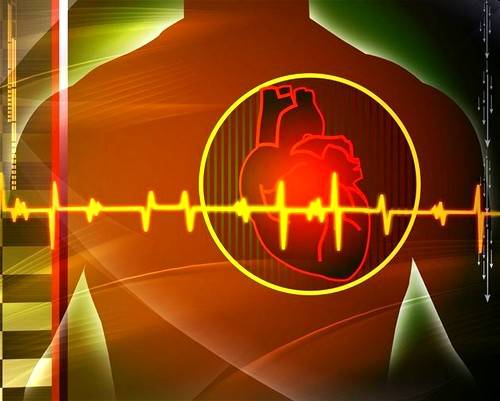
In most cases, the development of MI against the background of ischemia is preceded by a prodromal period (harbingers), it can last for a long time - several weeks, and faster - only a couple of days.
Prodromal phenomena are associated with deterioration of the coronary circulation and are called the pre-infarction state. This is very important to remember, because it is at this time that you can recognize the symptoms in time and prevent myocardial infarction.
The clinical symptoms of a pre-infarction state directly depend on which part of the myocardium has undergone necrotic changes, its size and the individual characteristics of the organism of each particular patient.
The pre-infarction state is a consequence of local spasm of the coronary arteries against the background of narrowing of the vessel lumen by atherosclerotic plaques. As a result, the supply of a section of the heart muscle with blood and oxygen is difficult or even stops.
Spasms of the coronary arteries contribute to damage to the inner lining of the artery - the intima of the artery, it is in this place that a thrombus is formed, which often completely blocks the access of oxygen - the result is a heart attack.
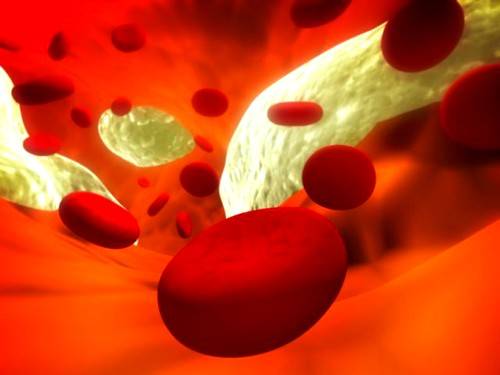
In clinical cardiology, a pre-infarction state is called unstable angina. Provoking factors include:
- SARS;
- arterial hypertension;
- Physical and emotional overstrain;
- sudden increase in physical activity
Clinically, angina pectoris manifests itself through paroxysmal compressive or pressing pains behind the sternum, which often radiate to the lower jaw, left shoulder or arm, under the left shoulder blade, or even to the neck. Somewhat less often, the pain syndrome is felt in the right half of the body (between the shoulder blades and the stomach).
Seizures occur in the following cases:
The duration of the pain attack is 1–15 minutes, it is stopped by taking nitroglycerin, and disappears on its own after the cessation of physical activity.
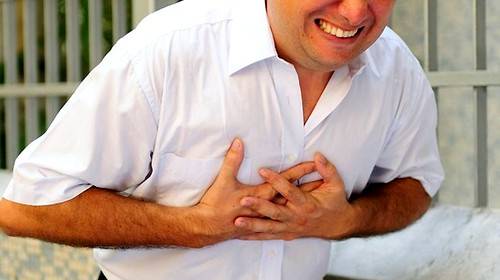
The prodromal period is characterized primarily by the fact that attacks occur after less pronounced physical activity than usual, or may occur at rest. As the prodrome progresses, the seizures become longer and more intense. To stop the attack, an increasing number of nitroglycerin tablets is needed.
Quite often, the clinical symptoms of a heart attack in women and men manifest themselves differently, they are called an atypical course. Atypical signs include:
- Absence of pain syndrome;
- Weakness;
- Irritability;
- Sleep disorders (drowsiness or insomnia);
- Dizziness;
- Shortness of breath from the rest stage;
- Cyanosis.
An atypical form of a pre-infarction state can only be diagnosed using an ECG (presence of extrasystole, paroxysmal tachycardia, circulatory failure).
As a rule, this picture is observed in persons of elderly and senile age (75-90 years).
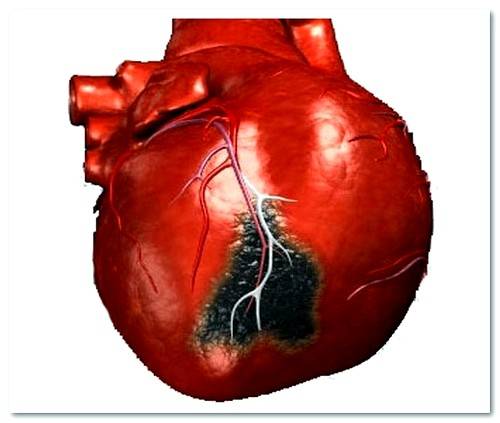
In some cases, on the eve of MI, an abdominal syndrome may be observed, in which pain radiates to the left side of the sternum and upper abdomen. The patient has the following symptoms:
- Burning in the epigastric region;
- Burning, cutting, aching or stabbing pain that increases with physical exertion, walking, stress.
The pain syndrome decreases at rest, as well as after taking high doses of cardiac drugs.
Patients may complain of pain in the upper back and in the left shoulder joint. Unfortunately, these symptoms of a microinfarction are sometimes mistakenly regarded as signs of cervicothoracic osteochondrosis or arthrosis. In such cases, patients mistakenly undergo x-rays and prescribe physiotherapeutic procedures that do not have a therapeutic effect, but, on the contrary, bring the development of a cardiac catastrophe closer.
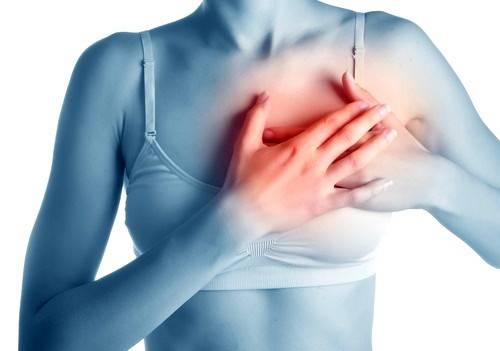
Such symptoms should be given special attention, it is necessary for the timely diagnosis and appointment of necessary treatment even before the onset of MI.
What is the duration of this state?
As for the duration of the prodromal syndrome, it lasts no more than three days, and sometimes it can reach three weeks. The number of deaths during this period could have been much lower if it had been diagnosed in a timely and accurate manner. If the patient has the above symptoms of a heart attack, urgent hospitalization and complete rest are indicated.
An important place in the diagnosis of "pre-infarction condition" is occupied by clinical signs. To confirm the patient, the following diagnostic tests are mandatory:
- Coronary angiography;
- ECHO Doppler study;
- Magnetic resonance imaging.
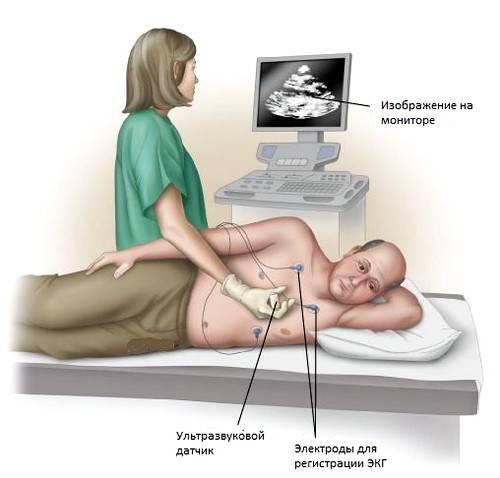
As a laboratory test, a biochemical blood test for enzymes can be prescribed, reflecting changes in the myocardium.
Basic principles of treatment
Absolutely all patients with a history of unstable angina must be urgently hospitalized in the cardiology department.
As therapeutic measures, the following can be prescribed:
- anticoagulants and/or antiplatelet agents;
- beta-blockers;
- beds;
- calcium antagonists;
- nitrates.
Most of the drugs listed above are intended for parenteral administration.
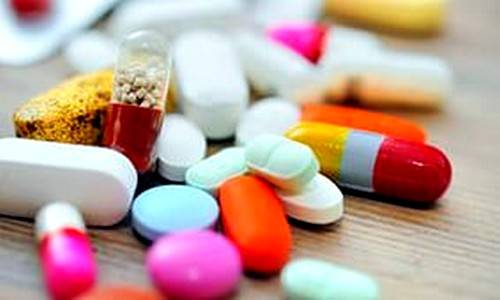
In cases where conservative methods of therapy do not bring the desired result, surgical treatment is prescribed, for example:
- coronary artery bypass grafting;
- percutaneous angioplasty;
- aortic balloon counterpulsation.
Preventive measures in the prodromal period of MI
As a preventive therapy for patients with ischemia, complex maintenance treatment of angina pectoris is prescribed:
- beta blockers;
- disaggregants.
It is necessary to monitor blood pressure indicators, laboratory control of cholesterol levels. An important place is occupied by dietary nutrition and a healthy lifestyle, including the rejection of addictions (alcohol, smoking).
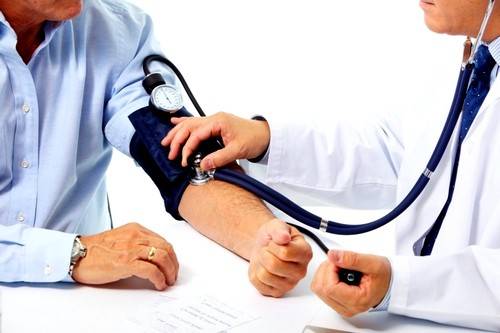
Patients with a history of coronary artery disease are shown a good rest, therapeutic walking for training the heart muscle.
antirodinka.ru
The neglected form of angina pectoris leads to such a result as a pre-infarction state. Signs are frequent chest pains that are not relieved by nitroglycerin.
Recognition of the pre-infarction condition
At the slightest suspicion of illness, you should immediately call an ambulance. It is very important to start treatment on time. So, the pre-infarction state, its signs are as follows:

The atypical course is characterized by weakness, dizziness, sleep disturbances, increased cyanosis, shortness of breath, but pain is not observed. This type of condition is typical for older people. Abdominal syndrome is characterized by pain in the left hypochondrium, burning, stabbing pains, deterioration during physical exertion, stressful conditions. After taking nitrate preparations, the patient feels relief.
Reasons for the appearance
In such a phenomenon as a pre-infarction state, the signs are similar to angina pectoris. The reasons may be hidden in the presence of bad habits, in an overdose of medications, in excessive physical exertion, and nervous stress. People with hypertension are more prone to this disease. Pre-infarction condition, the signs of which are determined by pain, lasts 3-21 days. Lethal cases that occur after a heart attack can be avoided by diagnosing a pre-infarction situation in time.
What to do if you have these symptoms
At the slightest suspicion of a pre-infarction condition, the signs of which were described above, the patient is hospitalized in the inpatient cardiology department, where he is provided with absolute rest and proper treatment. The patient is examined, the causes are identified. A diet is prescribed. 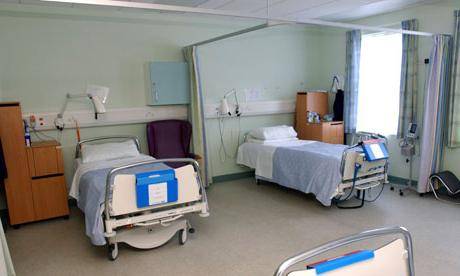
preinfarction state. Signs, treatment
Even the initial stage of angina in some cases can be diagnosed as a pre-infarction condition. In such cases, the ECG shows changes in the heart rhythm, abnormalities in the T wave, and displaced segments. Intractable attacks are considered as the beginning of a disease such as myocardial infarction. Frequently recurring seizures, especially when they occur at rest, are a great danger. The places of pain may change, the patient has severe shortness of breath. Angina has a stable and spontaneous character. Spontaneous form is characterized by the occurrence of seizures at night or in the morning. 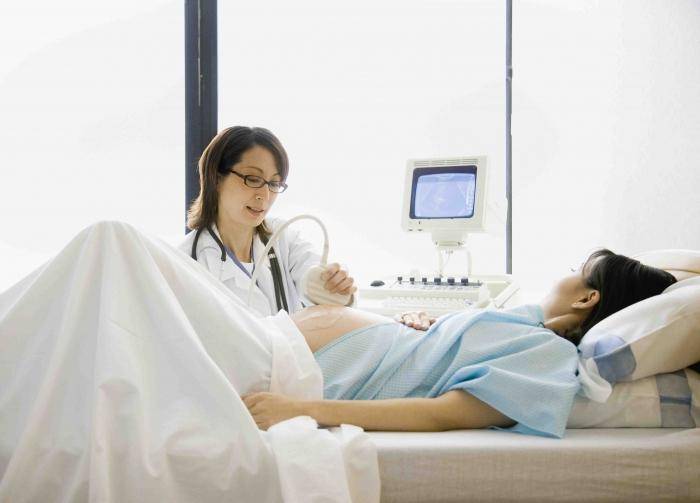
Therapeutic measures for pre-infarction condition
If a person is diagnosed with a "pre-infarction condition", the treatment is prescribed by a cardiologist. Factors such as the individual characteristics of the organism, the reaction to drugs are taken into account. Usually, the treatment regimen includes anticoagulant drugs, as well as antispasmodic drugs. The relief of pain attacks is carried out by the method of infusion of intravenous nitroglycerin preparations. The patient is shown complete rest, compliance with the regimen. The treatment is long term. Upon its completion, observation by a doctor, regular examinations using an electrocardiogram are recommended.
fb.ru
Be sure to read other articles:
